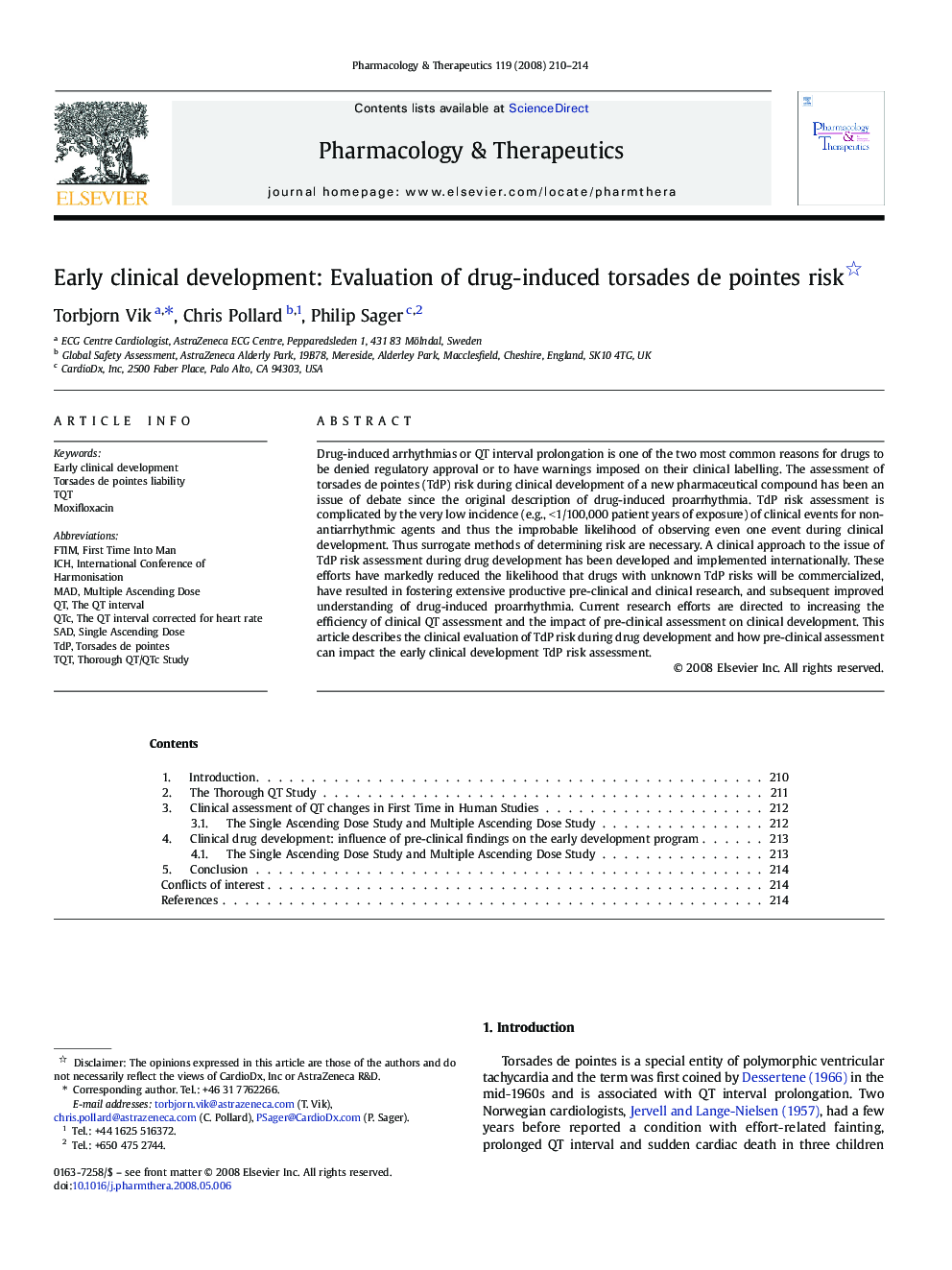| Article ID | Journal | Published Year | Pages | File Type |
|---|---|---|---|---|
| 2563870 | Pharmacology & Therapeutics | 2008 | 5 Pages |
Drug-induced arrhythmias or QT interval prolongation is one of the two most common reasons for drugs to be denied regulatory approval or to have warnings imposed on their clinical labelling. The assessment of torsades de pointes (TdP) risk during clinical development of a new pharmaceutical compound has been an issue of debate since the original description of drug-induced proarrhythmia. TdP risk assessment is complicated by the very low incidence (e.g., < 1/100,000 patient years of exposure) of clinical events for non-antiarrhythmic agents and thus the improbable likelihood of observing even one event during clinical development. Thus surrogate methods of determining risk are necessary. A clinical approach to the issue of TdP risk assessment during drug development has been developed and implemented internationally. These efforts have markedly reduced the likelihood that drugs with unknown TdP risks will be commercialized, have resulted in fostering extensive productive pre-clinical and clinical research, and subsequent improved understanding of drug-induced proarrhythmia. Current research efforts are directed to increasing the efficiency of clinical QT assessment and the impact of pre-clinical assessment on clinical development. This article describes the clinical evaluation of TdP risk during drug development and how pre-clinical assessment can impact the early clinical development TdP risk assessment.
